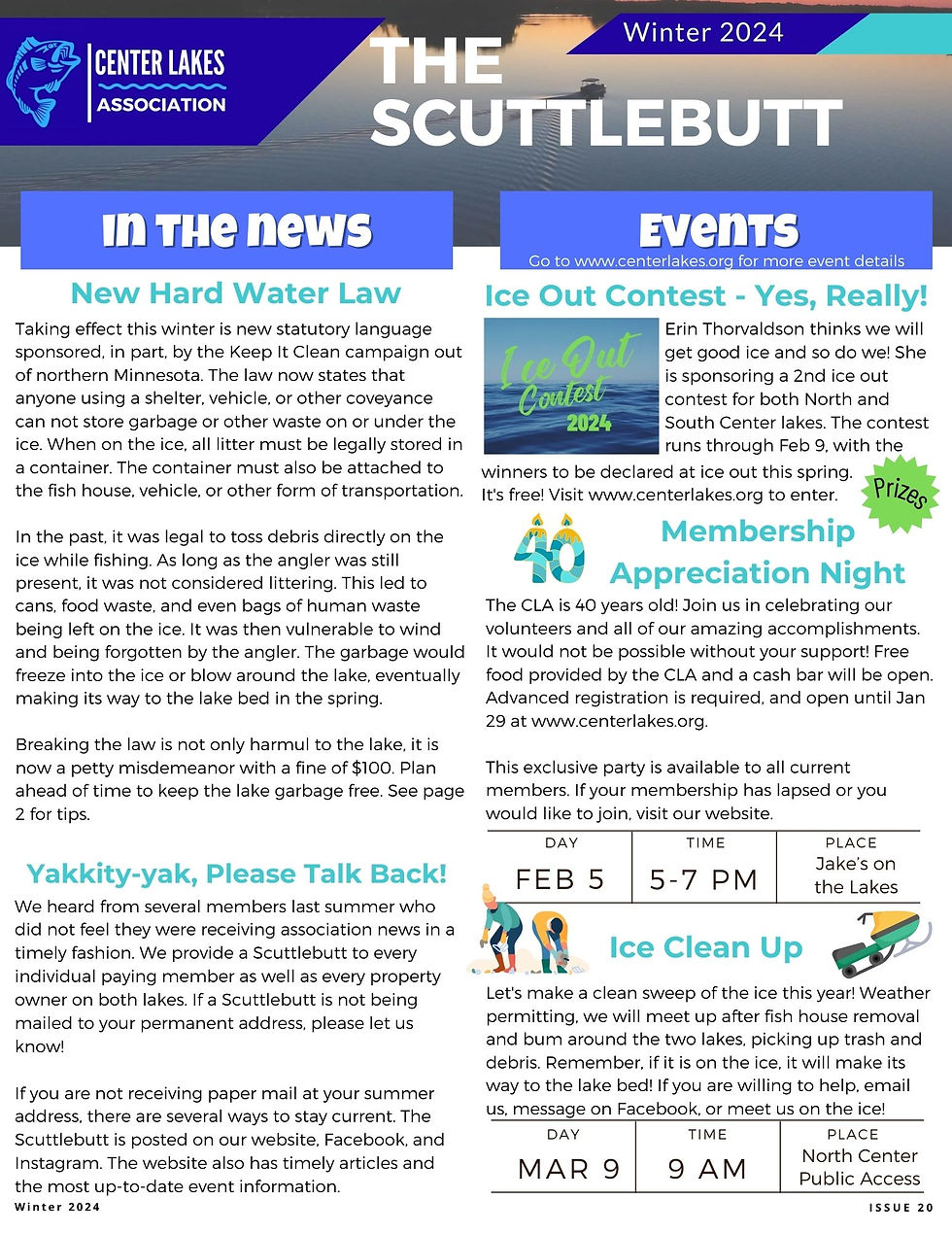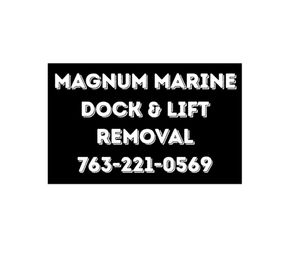Minnesota’s Vanishing Natural Shorelines
- Jonathan Schoen
- Aug 6, 2023
- 2 min read

***The following is an excerpt written by Lily Carr from MN Lakes & Rivers about our vanishing natural shorelines, please read the entire article in the PDF below***
Many of Minnesota’s lakes are in trouble. About half of Minnesota’s natural shorelines have already been lost, and natural shoreline continues to vanish at an alarming rate. We are degrading our lake water quality. Mowed shorelines allow 7 to 9 times more pollutants to enter the lake than a more naturally vegetated shoreline. These pollutants accumulate in lakes, often creating serious water quality problems while also promoting algal blooms and excessive aquatic vegetation. In addition, we are losing valuable habitat for fish – and loons, frogs, butterflies and more. We are losing the beauty of diverse shorelines and the unique character of Minnesota. It is critical that we act, and act now, to protect our vanishing healthy shoreline and recover what has been lost.
We are aware that the status quo is not working. Despite fifty years of state shoreline vegetation standards and local government regulation, the system has failed to adequately protect our natural shorelines. Additional efforts such as education and enforcement have been only marginally successful.
For lake water quality, fish and wildlife communities, and to sustain the health of Minnesota lakes for our recreation and enjoyment, a reasonable natural shoreline protection and restoration goal would be that 75% of a shoreline be unmowed with natural vegetation, consisting of forbs, grasses, shrubs, and trees that is at least 25 feet in width landward from the lake. How can such a goal be achieved?
After listening to many people and organizations about protecting and restoring shorelines, several reoccurring themes emerged. First, local government staff, at the forefront of property owner interactions, need support and additional technical guidance to promote and facilitate shoreline restoration. Second, there is evidence that community leadership development, including civic engagement approaches1 , can effectively shift social norms towards protecting and restoring natural shorelines. However, it can take time for behavior shifts to successfully establish. Therefore, community leadership development requires continued support and focus to gain and sustain momentum. Third, effective partnerships from neighboring states may provide models to advance protection and restoration of natural shorelines.
Specific actions that could be taken include:
1. Strengthen the relationships between the many organizations with interest in protecting and restoring shoreline. These organizations include state government, local government, statewide non-profit organizations (like MLR, Freshwater Society, Metro Blooms, and MN COLA), and local organizations, such as lake associations. Vanishing Natural Shorelines: A Loss that Contributes to Degraded Lake Quality
Work to understand the roles each organization plays in shoreline maintenance and seek to align these roles to organization.
Make a concerted effort to engage in dialog understand their needs and use this information to improve guidance, tools, and programs.
2. Improve public outreach with a sustained, consistent message from all partner organizations.
3. Provide more training and outreach opportunities for key audiences including lakeshore landowners, landscape contractors and consultants.
4. Increase one-on-one landowner con enhancing the capacity of these efforts. Examples of this include the Lake Steward Minnesota Water Steward
5. Create incentives for shoreland protection and restoration.
6. Enhance funding to support for shoreland protection and restoration programs.
















